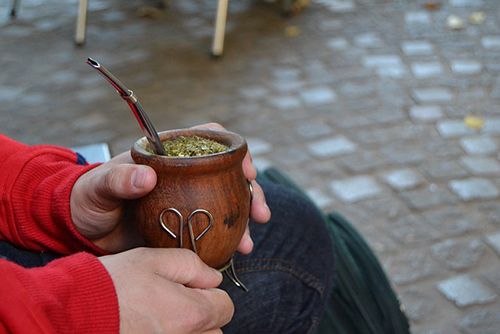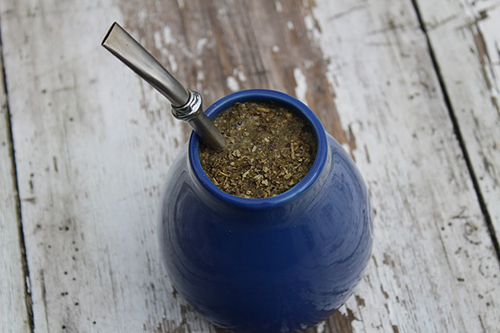Contents
The yerba mate plant comprises the ingredients of a trendy drink in South America, especially in regions where the diet is meat-based. Its aroma, chemical composition, and effects resemble those of coffee. South Americans drink mate after slightly toasting its leaves, putting them into a calabash or cocoa bark, pouring hot water over them, and adding a significant amount of sugar. Traditionally, it is sipped through a tube or straw that ends in a sphere with tiny holes that serve as a filter, called a bombilla.

Yerba Mate Plant Scientific Facts
- Scientific synonyms: IIex paragenesis D. Don.
- Other names: Paraguayan tea.
- French: Mate.
- Spanish: Yerba mate, mate.
- Environment: It grows wild in Argentina, Chile, Peru, and Brazil and is farmed mainly in Paraguay. It is little known outside South America.
- Description: This shrub of the Aristolochiaceae family grows up to five meters high. It has oval, perennial, coriaceous, and ochre-greenish leaves.
- Parts of the plant used medicinally: Leaves.
Yerba Mate Plant Benefits and Healing Properties

Its leaves contain caffeine (1-1.5 percent, while coffee contains up to 2 percent), theobromine (another excitant xanthine found in cocoa), tannins, and chlorogenic acid.
It is a muscular and nervous system excitant, though its effects are not as marked as those of coffee. Habitual consumption causes addiction (urge to keep on consuming it), as well as toxic effects on the nervous system (irritation), the heart (palpitations, tachycardia), and a predisposition to gastric and duodenal ulcers).
As a medicinal herb, it may be administered whenever there is no other less toxic remedy, such as in cases of headaches, head congestion due to heat (sunstroke), blackout, or fainting. One must never forget that the relief yerba mate offers is symptomatic (it does not heal the cause), and its chronic consumption produces toxic effects. In external use, yerba mate is applied in compresses because of its antiseptic and wound-healing properties.
How to use Yerba Mate
- Infusion with 20-40 grams of leaves per liter of water. Do not consume more than 3 cups daily.
- Compresses. In popular medicine, compresses soaked in the infusion are used to wash infected wounds and treat burns.

WARNING! The yerba mate plant must not be used continuously, not even as a medicine, because its caffeine content will produce addiction (urge to keep on taking it) and tolerance (urge to boost the dose), as with any other drug that is addictive. The use of the yerba mate is contraindicated in the following cases: gastric and duodenal ulcer, gastritis, pyrosis (stomach acidity), nervousness, hypertension, heart dysfunctions, arrhythmia, gout, pregnancy (diminishes the fetal growth), and breastfeeding (the caffeine passes to the mother’s milk).
DISCLAIMER: All content on this website is presented solely for educational and informational objectives. Do not rely on the information provided as a replacement for advice, diagnosis, or treatment from a qualified medical expert. If you are pregnant, nursing, or have any preexisting medical concerns, talk to your doctor before using any herbal or natural medicines.
REFERENCES
- George D. Pamplona-Roger, M.D. “Encyclopedia of Medicinal Plants.” George D. Pamplona-Roger, M.D. Encyclopedia of Medicinal Plants. Ed. Francesc X. Gelabert. Vols. 1 San Fernando de Henares: Editorial Safeliz, 2000. 182. Print.[yerba mate plant]
- WebMD: https://www.webmd.com/diet/health-benefits-yerba-mate
- https://examine.com/supplements/yerba-mate/
Last update on 2025-06-04 / Affiliate links / Images from Amazon Product Advertising API






